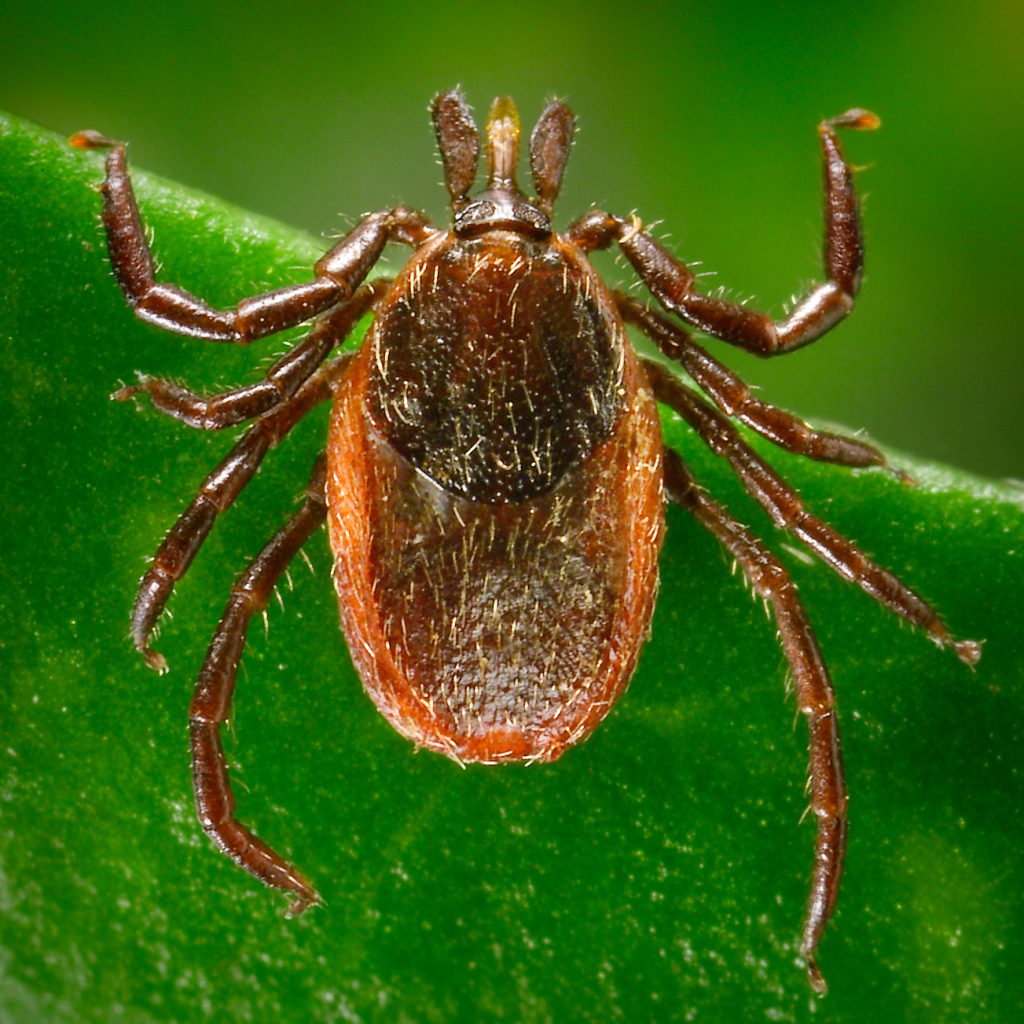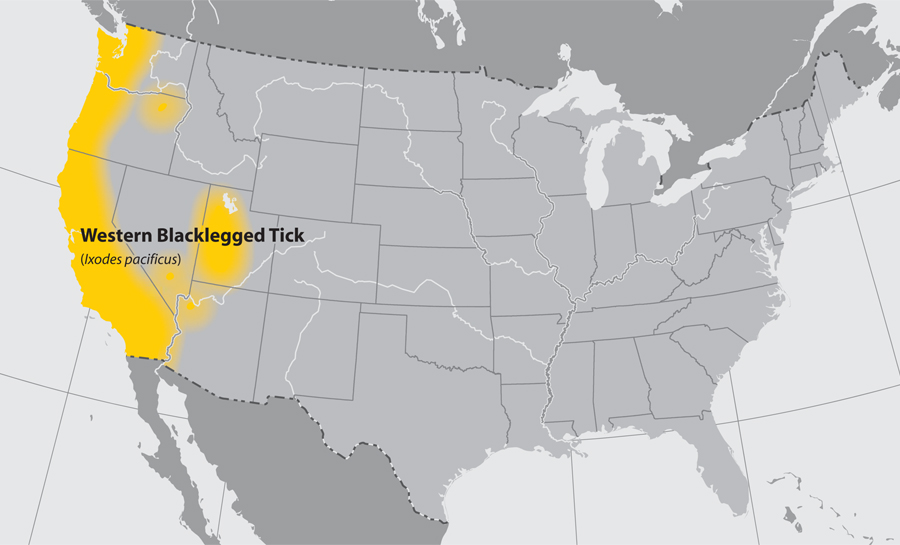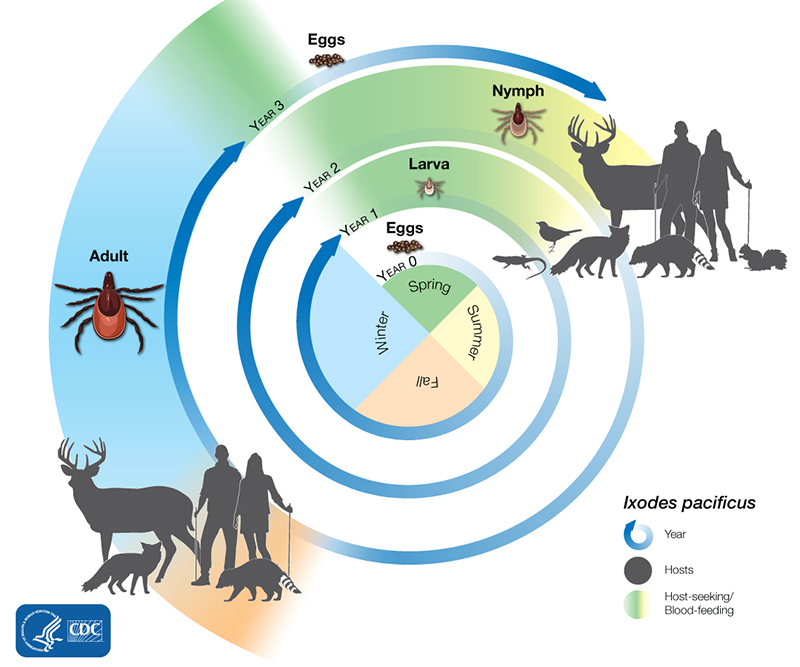WESTERN BLACKLEGGED TICK
Ixodes pacificus
The hard tick (Ixodidae) identified below pose health risks for both humans and animals in the Pacific Southwest. Hard ticks are recognized by their mouth parts that project forward from the body and for having a hard outer shell, also known as scutum.

Western blacklegged ticks can carry and spread pathogens that are responsible for diseases in both humans and animals.
- Anaplasma phagocytophilum (pathogen) – Anaplasmosis (disease)
- Borrelia burgdorferi (pathogen) – Lyme disease (disease)
- Borrelia miyamotoi (pathogen)
View CDPH Seasonal Risk of Exposure to Infected Western Blacklegged Ticks in California
Western blacklegged ticks can be found in northern California, along the Pacific Coast of the US.
Visit the CDC website for more information.
 Photo: Bay Area Lyme Foundation
Photo: Bay Area Lyme Foundation
TICK RESOURCES
Learn about the tick species that pose health risks for both humans and animals in the region and view public health information on ticks.
GOT TICKS? CONTACT BiTeRS!
The Border Tick and Rickettsia Surveillance (BiTeRS) program of PacVec offers services to enhance surveillance for ticks and tick-borne pathogens of human health concern in California and Arizona.
The Pacific Southwest Regional Center of Excellence in Vector-Borne Diseases is supported through Cooperative Agreement Number 1U01CK000649 between the Centers for Disease Control and Prevention (CDC) and the University of California, Davis.
© 2025 – All rights reserved

